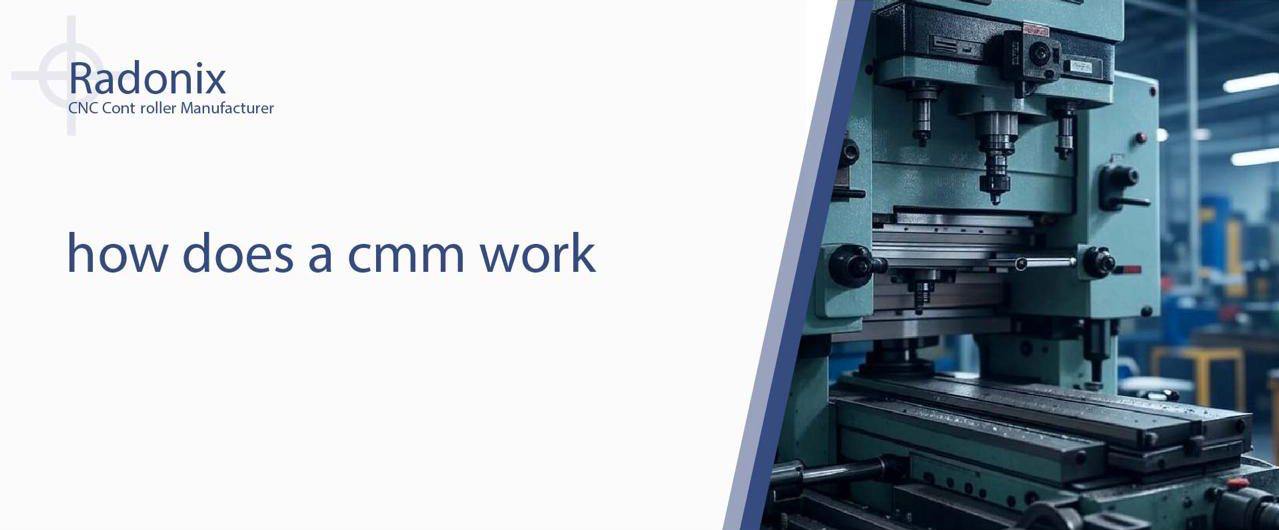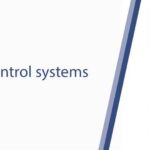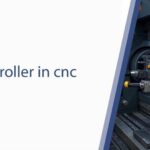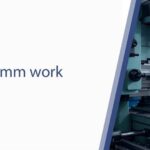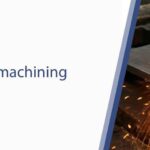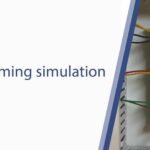In the complex world of modern manufacturing, where precision is paramount, a single micron can be the difference between a perfect product and a costly failure. Quality control is not just a final check; it’s an essential process that ensures every part meets its exact specifications. At the heart of this process stands the Coordinate Measuring Machine, or CMM. It is the gold standard for dimensional inspection, a highly sophisticated tool that validates the physical geometry of a part with unparalleled accuracy. But for many, the question remains: how does a CMM work?
The seemingly effortless movements of a CMM’s arm, guided by a probing sensor, are the result of a brilliant fusion of mechanical engineering, advanced computer science, and metrology. It’s a precise dance of technology that transforms a physical object into a digital dataset, allowing for a comprehensive analysis of its features. At Radonix, we understand the critical role that a CMM plays in quality assurance, and we are experts in the advanced control systems and software that enable these machines to perform their vital functions.
This article will demystify the technology and provide a detailed explanation of how does a CMM work, from its foundational principles to its practical applications in modern manufacturing.
What is a CMM? The Basics of Dimensional Inspection
Before we answer the question, how does a CMM work, let’s first define what it is. A CMM is a device used to measure the physical geometrical characteristics of an object. It’s a three-dimensional measuring tool that uses a probing system to collect a series of points on the surface of a workpiece. This data is then used to verify that the part’s dimensions, features, and tolerances are within the specifications laid out in its design.
CMMs are widely used in a variety of industries, including:
- Aerospace: Inspecting critical engine components and airframe parts.
- Automotive: Verifying the dimensions of engine blocks, body panels, and transmissions.
- Medical Devices: Ensuring the precision of surgical implants and instruments.
- General Manufacturing: Quality control for molds, dies, and machined parts.
The core components of a CMM typically include a granite base, a moving gantry or arm that moves along three axes (X, Y, and Z), a probe at the end of the arm, and a sophisticated computer control system and software.
The Foundational Principle: The Coordinate System
The entire operation of a CMM is built upon a single, foundational principle: the Cartesian coordinate system. Just like a graph in mathematics, the CMM defines a three-dimensional space with an origin point (0, 0, 0) and three perpendicular axes: X, Y, and Z.
Here’s the simple explanation of how does a CMM work at this fundamental level:
- Defining the Space: The CMM’s hardware and software are precisely calibrated to define its physical workspace in terms of these X, Y, and Z coordinates.
- Establishing a Reference: A part is placed on the CMM’s granite table. The operator then programs the CMM to establish a reference point or “home” on the part. This aligns the part’s coordinate system with the CMM’s, so all subsequent measurements are relative to the part itself.
- Measuring Points: The CMM’s probe then moves along the axes, and as it touches or scans the part’s surface, it records the exact X, Y, and Z coordinates of each point of contact.
- Creating a Data Cloud: By collecting thousands or even millions of these points, the CMM creates a highly accurate digital “point cloud” or 3D model of the part.
This digital representation is the key to all subsequent analysis. It’s the answer to how does a CMM work—it meticulously maps the physical world onto a precise digital grid.
A Step-by-Step Guide: How Does a CMM Work in Practice?
To better understand the process, let’s walk through a typical inspection using a CMM.
Step 1: Part Setup and Fixturing
The first and most crucial step is to securely mount the part to be inspected on the CMM’s granite table. The part must be stable and immovable, as any shift during the measurement process would result in inaccurate data. Fixtures, clamps, and jigs are used to hold the part in a fixed position.
Step 2: Probe Calibration
The probe and its stylus (the physical tip that makes contact) must be perfectly calibrated. The CMM software guides the operator through a process where the probe touches a highly accurate reference sphere from different angles. This calibrates the size and position of the stylus tip, ensuring that the CMM knows the precise location of the touch point regardless of which direction the probe approaches from.
Step 3: Program Creation
This is where the intelligence of the CMM comes into play. A measurement program is created to guide the CMM through the inspection process. There are two primary ways to create a program:
- Manual Teaching: An operator can manually guide the probe to the features to be measured. The CMM’s software records these movements and creates a program that can be run automatically on subsequent parts.
- CAD-Based Programming: The most modern and efficient method involves using a 3D CAD model of the part. The operator uses the CMM software to select the features to be inspected (e.g., holes, planes, curves) directly on the digital model. The software then automatically generates the most efficient tool path for the probe.
Step 4: Measurement and Data Collection
Once the program is ready, the CMM begins its automated inspection. The arm moves with incredible speed and accuracy, and the probe either touches or scans the surface of the part, collecting thousands of data points in a matter of minutes.
Step 5: Data Analysis and Reporting
This final step is where the value of the CMM is truly realized. The software compares the collected point cloud data to the original CAD model or design specifications. It can then:
- Calculate Dimensions: Measure diameters, distances, angles, and depths.
- Verify Tolerances: Check if each dimension falls within the specified tolerances, including Geometric Dimensioning and Tolerancing (GD&T).
- Generate Reports: Create a comprehensive report, often in a color-coded format, that clearly shows which dimensions are in tolerance, out of tolerance, or approaching the limits.
This entire process, from setup to final report, is the complete answer to how does a CMM work.
The Different Types of CMM Probes
The probe is the “eye” and “finger” of the CMM, and its technology is crucial to the machine’s capabilities.
- Contact Probes: The most common type is the touch-trigger probe. When the stylus makes contact with the workpiece, it sends an electrical signal that instantly triggers the CMM to record the coordinates of that point.
- Non-Contact Probes: For delicate materials, soft parts, or complex free-form surfaces, non-contact probes are used. These include:
- Laser Scanners: A laser beam sweeps across the surface, and a camera measures the reflection to create a point cloud.
- Optical Probes: A high-resolution camera takes pictures of the part, and the software uses edge detection and other algorithms to measure features.
The choice of probe depends entirely on the material and the complexity of the part being inspected.
The Brains Behind the Operation: CMM Control Systems
A CMM is more than just a piece of hardware; it is an integrated system. The speed, accuracy, and reliability of the entire process depend on its control system and software. The control system is the brain that interprets the measurement program, commands the servo motors to move the axes with sub-micron precision, and coordinates the actions of the probe.
At Radonix, we are experts in the advanced motion control and software solutions that power these highly precise machines. Our control systems are designed to deliver:
- Exceptional Speed and Accuracy: We enable CMMs to move and measure faster without sacrificing precision.
- Seamless Software Integration: Our systems work with advanced metrology software to provide a user-friendly and powerful platform for inspection.
- Robust and Reliable Performance: Our control technology is built for the demanding environment of quality control, ensuring consistent and trustworthy results.
The answer to how does a CMM work is a testament to the seamless integration of mechanical and electrical engineering with cutting-edge software. It’s a process of taking precise measurements in a 3D space, and a high-quality control system is what makes this possible.
Interested in learning more about the technology that drives precision measurement? Contact Radonix today to discuss our advanced control systems and their role in the world of metrology.

